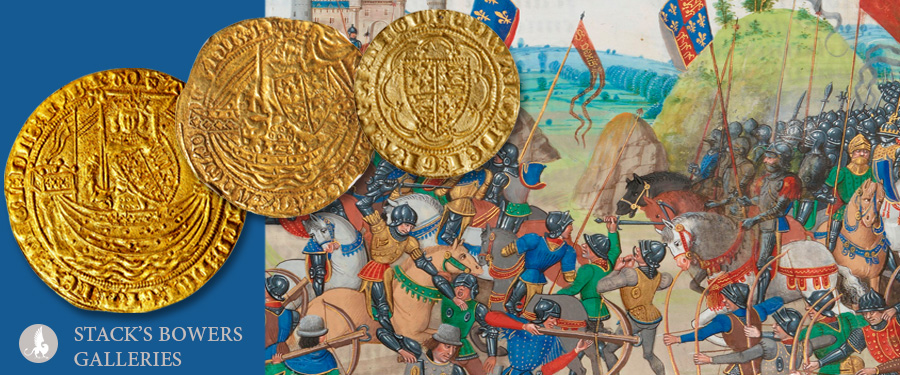
On August 26, 1346, English forces under the leadership of King Edward III decisively defeated the French army led by King Philip VI at the Battle of Crécy during the Hundred Years War. The English army had landed in France six weeks earlier and marched nearly to Paris and then to the north, leaving a swath of destruction in their wake. King Philip had gathered an army that greatly outnumbered the English and late in the day on August 26 he attacked.
Despite the larger force of the French, King Edward had prepared a defensive position and was able to maximize the skill of his longbowmen and the greater effectiveness of these weapons against the crossbows used on the French side. A brief archery duel was followed by a series of French cavalry charges that were impeded by disorganization, muddy conditions, an uphill trajectory, their own crossbowmen retreating, and eventually dead and fallen French soldiers and horses. When portions of King Philip’s army reached the English, the hand-to-hand combat was fierce, with the French turned back. Charges continued into the night, but the result for the attackers remained the same. The following day, the English men at arms charged and routed the French, pursuing them for miles. Casualties were great on the French side, numbering perhaps in the tens of thousands and including many nobles. Estimates for English losses ranged from fewer than 100 up to the low thousands.
The English went on to lay siege to Calais, a situation the crippled French Army was not able to relieve. The town fell the following year and would remain under English rule for more than 200 years.
In our Summer Global Showcase Auction we were pleased to offer two extensive offerings of the coins of Great Britain, both of which included coins issued during the reign of King Edward III.





